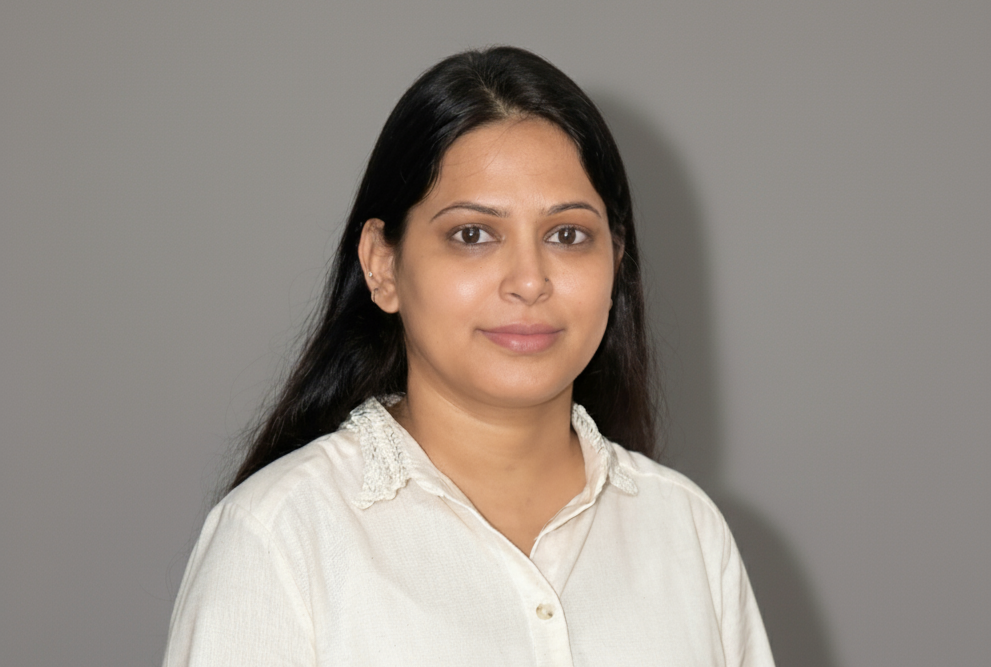This interview has been published by Anshi Mudgal and The SuperLawyer Team
You’ve led high-stakes SaaS and IT contract negotiations across jurisdictions like the US, UK, Middle East, and India. What key legal and commercial differences have you observed among these regions, particularly in structuring and negotiating complex technology agreements?
The fundamental difference is risk philosophy and regulatory approach. US contracts are heavily liability-focused with aggressive risk shifting – broad indemnities, high liability caps, and extensive IP warranties because litigation risk is real. UK/EU takes a more balanced approach with reasonable risk allocation, but GDPR fundamentally changed data processing terms and cross-border transfer requirements.
Middle East markets are relationship-driven with conservative risk tolerance, they often require local partnerships, prefer advance payments or guarantees, and decision-making is more hierarchical. Each country varies significantly – UAE’s approach differs from Saudi Arabia’s regulatory framework.
India is extremely cost-sensitive with detailed SLA requirements and strong data localization mandates under DPDP Act. There’s preference for Indian governing law and local arbitration venues.
For AI and emerging tech, the differences are stark. US allows broad AI disclaimers and extensive model training rights. EU requires AI Act compliance with strict accountability for high-risk systems. The Middle East often mandates human oversight for AI decisions. India’s framework is still emerging but trending toward data sovereignty.
My approach: Use master agreements with jurisdiction-specific addenda rather than one-size-fits-all contracts. Build modular compliance sections that adapt to local requirements. Most importantly, understand that what works in Silicon Valley often needs significant adaptation – both legally and commercially – for other markets.
As Director-Legal (Deputy General Counsel) at Innovaccer and a close advisor to both leadership and product teams, how has your role evolved beyond traditional contract review into a more strategic business function?
My role has evolved from traditional lawyer to strategic business partnership. I’m now embedded with product and leadership teams from the earliest stages, helping architect compliance into product roadmaps rather than reviewing afterward, participating in M&A strategy and market expansion decisions, and turning regulatory requirements into competitive advantages. I’ve built legal infrastructure that operates at business speed through automated workflows, self-service templates, and proactive frameworks that eliminate bottlenecks. The result is measurably faster deal cycles, on-schedule product launches, and better strategic decision-making because legal insights come early in the process rather than as obstacles later. Legal has become a growth accelerator rather than a cost center.
From negotiating complex IT contracts to managing commercial transactions, you’ve worked extensively across highly regulated sectors. How do you stay abreast of evolving legal and regulatory frameworks, particularly in areas like data privacy and technology law? What’s your approach to identifying and mitigating legal risks in such fast-paced and dynamic industries?
Staying current in fast-moving regulatory environments requires a systematic approach, not just ad-hoc reading. I’ve built a multi-layered monitoring system that combines automated alerts, industry networks, and practical application. For regulatory tracking, I use targeted legal research platforms with custom alerts for specific jurisdictions and practice areas – data privacy updates from key regulators like FTC, state AGs, and international bodies. I also maintain relationships with specialized regulatory counsel in different jurisdictions who provide real-time insights on enforcement trends and practical legal and compliance interpretations.
Industry engagement is equally important. I’m active in relevant legal associations and regularly attend focused conferences – not general legal events, but sector-specific gatherings where regulators actually speak and share enforcement priorities. Peer networks with other in-house counsel facing similar challenges provide invaluable practical insights you can’t get from legal publications.
For risk identification, I’ve developed frameworks that integrate legal monitoring with business operations. I work closely with product, engineering, and business development teams to understand what’s actually being built and sold, not just what’s documented. This early visibility lets me spot regulatory risks before they become legal problems.
My mitigation approach focuses on building scalable systems rather than case-by-case reviews. I create legal frameworks that can adapt to regulatory changes without rebuilding everything. For data privacy, this means privacy-by-design architectures that can accommodate new requirements. For commercial transactions, it means modular contract structures that can be updated efficiently.
The key is making legal monitoring a business process, not a personal responsibility. When regulatory changes happen, we can adapt quickly because the infrastructure is already in place.
In the early stages of your career, you worked across diverse areas like transaction structuring, energy law, employment compliance, and more. How has this multidisciplinary exposure informed your legal thinking and approach as an in-house counsel today?
That multidisciplinary foundation taught me to see legal issues as interconnected business problems rather than isolated practice areas. Working in energy law showed me how regulatory frameworks shape entire business models. Transaction structuring taught me to think commercially about risk allocation. Employment laws gave me an operational perspective on how legal requirements actually impact day-to-day business. Now as in-house counsel, I don’t just analyze contracts in isolation – I understand how employment terms affect deal structures, how regulatory compliance impacts transaction timelines, and how operational realities influence legal strategy. This cross-functional thinking lets me spot issues other lawyers miss and provide solutions that work across multiple business functions. Instead of saying ‘that’s not my area,’ I can connect dots between different legal domains to solve complex business challenges more effectively.
You’ve worked closely with business stakeholders, particularly in the IT sector. What are some common challenges you encounter in ensuring legal compliance, and how can businesses proactively address these issues early in the process to avoid future roadblocks?
The biggest challenge is that business teams treat legal compliance as a final review step rather than a foundational design element. In commercial contracting, sales teams often negotiate terms that create operational nightmares – promising SLAs we can’t meet or data processing we can’t legally perform. On the product side, teams build features first, then discover they violate privacy laws or create IP ownership issues. My approach is embedding legal requirements upfront – I work with sales to create contract playbooks with pre-approved terms that close deals faster, collaborate with product teams during feature planning to ensure privacy-by-design, and partner with engineering on data architecture that supports both business needs and regulatory compliance. I also build automated approval workflows and self-service legal tools so teams can move at business speed without creating risks. The result is that legal becomes a competitive advantage – we can commit to terms competitors can’t, launch compliant products faster, and avoid the costly retrofitting that kills margins and delays launches.
With over a decade of experience, what initially drew you to pursue law as a career? When you reflect on your journey now, how has your vision evolved since those early days?
I was initially drawn to law because I saw it as a way to solve complex problems and create structure in ambiguous situations. Early on, I thought legal work was about finding the right answer in statutes and precedents. Over the past decade, I’ve realized that the most impactful legal work happens at the intersection of law and business strategy – it’s not just about compliance, but about enabling growth and competitive advantage. My vision has evolved from being a legal expert who provides advice to being a business partner who helps drive outcomes. I’ve learned that the best legal solutions aren’t just technically correct – they’re commercially viable and operationally practical. What excites me now is using legal expertise to unlock business opportunities that others can’t see, whether that’s structuring deals that competitors can’t match or building compliance frameworks that become market differentiators. Law became less about finding answers in books and more about creating solutions that don’t exist yet.
Recognized for your strong contributions across industries, what core values or guiding principles have anchored your legal journey? Looking ahead, what goals or aspirations do you hold for the future?
Ans: Three core principles have guided my legal career: pragmatic problem-solving over theoretical perfection, business enablement rather than risk avoidance, and building scalable systems instead of one-off solutions. I’ve always believed that the best legal advice is the advice that actually gets implemented – which means understanding business realities and crafting solutions that work operationally, not just legally. My approach has been to turn legal requirements into competitive advantages rather than compliance burdens. Looking ahead, I’m focused on leveraging emerging technologies like AI to transform how legal functions operate – building intelligent contract systems, predictive compliance frameworks, and automated risk assessment tools that let legal teams operate at unprecedented scale and speed. My aspiration is to help redefine what in-house legal can accomplish, moving from a support function to a strategic driver of business growth and innovation. The future of legal is about using technology and strategic thinking to solve business problems that haven’t been solvable before.
Legal work in high-stakes corporate environments is intense. How do you balance your professional responsibilities with personal well-being? What practices or activities help you recharge and maintain perspective?
Honestly, I’m a natural hustler – I thrive on the intensity and challenge of high-stakes legal work. But I’ve learned that raw drive without strategy leads to burnout, not breakthrough results. The key is channeling that energy where it creates maximum impact rather than spreading it thin across everything.
With experience, I’ve developed systems for sustainable high performance. I start my day with strategic work before reactive demands take over, and I batch similar tasks to maintain deep focus rather than constant context-switching. Outside work, I stay physically active and spend time with my dog – there’s something grounding about that unconditional companionship that cuts through legal complexity. I’m also involved in community animal welfare work, which connects me to something meaningful beyond corporate environments.
The breakthrough insight: stepping away from legal problems often unlocks better solutions when I return. I’ve built strong professional relationships that provide perspective during intense periods, and I’ve learned to distinguish between urgent and important – not every crisis is actually critical. This lets me stay calm under pressure and direct my hustler energy where it matters most. Sustainable excellence isn’t about working harder – it’s about managing energy strategically.
Given your wide-ranging expertise, what advice would you offer to young lawyers entering the legal profession today particularly those looking to build careers in corporate law, technology, or cross-border commercial practice?
Three pieces of advice: First, become genuinely business-literate, not just legally competent. Understand how companies actually make money, how technology works, and what drives commercial decisions. The lawyers who succeed long-term are those who can translate legal requirements into business solutions. Second, specialize early but stay adaptable. Pick a sector like fintech or healthcare and become the go-to expert, but develop skills that transfer across industries – contract negotiation, regulatory analysis, and strategic thinking are universal. Third, build relationships before you need them. The best opportunities come through networks, not job boards. Connect with in-house counsel, business leaders, and peers who’ll become your referral sources and collaborators. For cross-border work specifically, understand that legal expertise alone isn’t enough – you need cultural fluency and practical knowledge of how business actually gets done in different markets. Most importantly, think like a business partner from day one. Don’t just identify problems – propose solutions. The lawyers who advance fastest are those who make their clients’ lives easier, not more complicated.
Get in touch with Neha Shankar –




